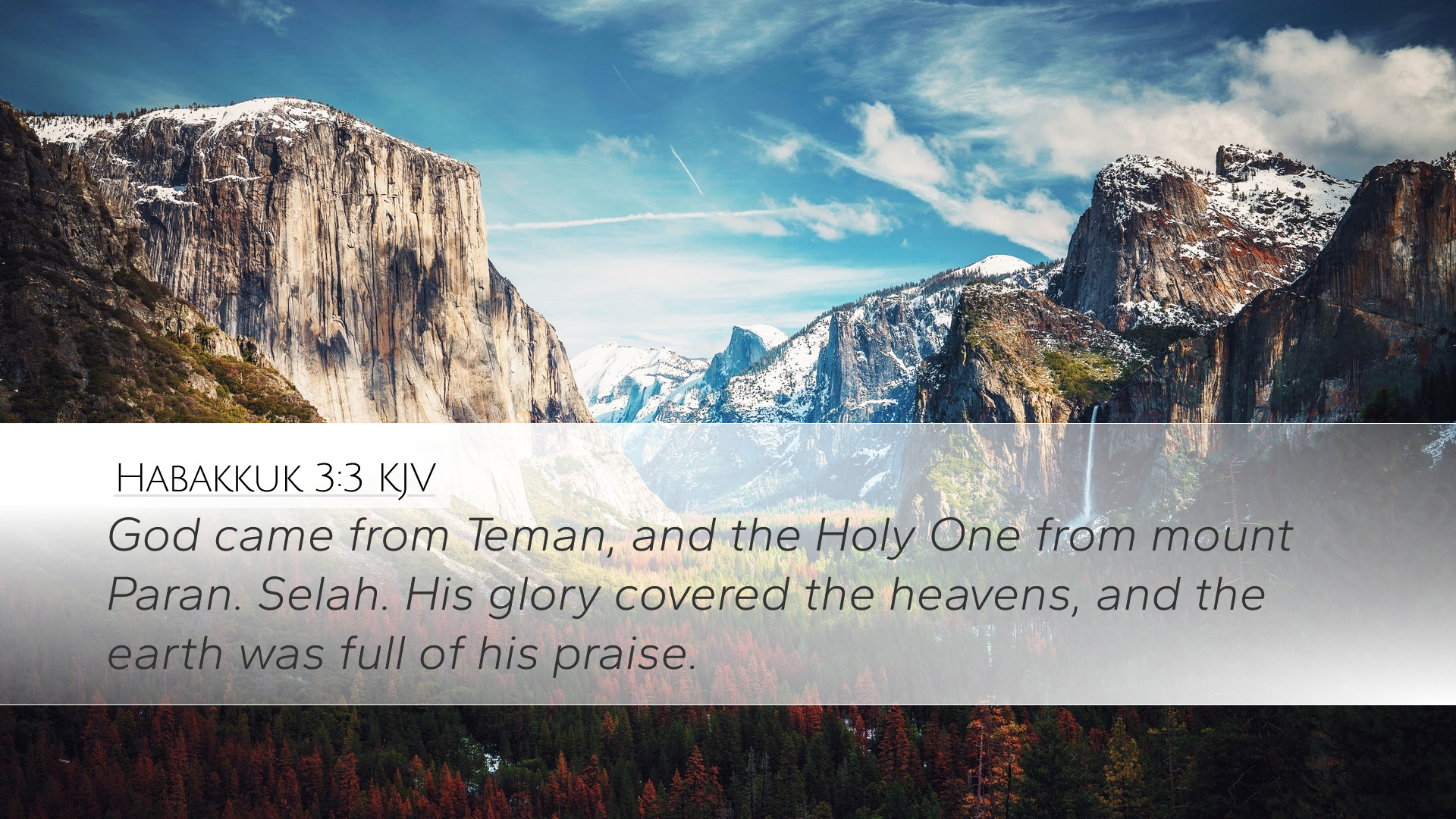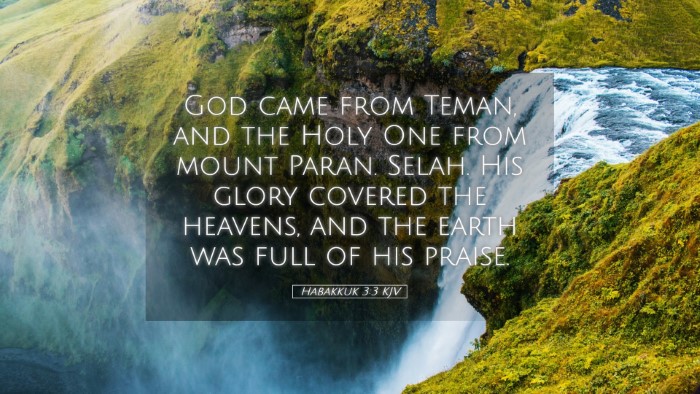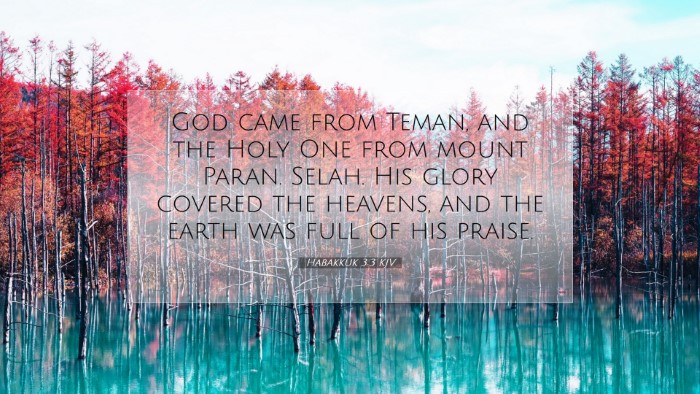Old Testament
Genesis Exodus Leviticus Numbers Deuteronomy Joshua Judges Ruth 1 Samuel 2 Samuel 1 Kings 2 Kings 1 Chronicles 2 Chronicles Ezra Nehemiah Esther Job Psalms Proverbs Ecclesiastes Song of Solomon Isaiah Jeremiah Lamentations Ezekiel Daniel Hosea Joel Amos Obadiah Jonah Micah Nahum Habakkuk Zephaniah Haggai Zechariah MalachiHabakkuk 3:3
Habakkuk 3:3 KJV
God came from Teman, and the Holy One from mount Paran. Selah. His glory covered the heavens, and the earth was full of his praise.
Habakkuk 3:3 Bible Commentary
Commentary on Habakkuk 3:3
Verse: "God came from Teman, and the Holy One from Mount Paran. Selah. His glory covered the heavens, and the earth was full of his praise."
Introduction
Habakkuk 3:3 serves as a vibrant declaration of God's majesty and glory. This verse emphasizes the theophany—the manifestation of God—highlighting the earth's response to His divine presence. In exploring this verse, we draw on the insights of renowned commentators such as Matthew Henry, Albert Barnes, and Adam Clarke, who offer profound theological and historical perspectives.
God's Manifestation in History
The phrase "God came from Teman" is significant as Teman, a city in Edom, suggests God's arrival from a place associated with strength and heritage. Matthew Henry notes that God’s coming from Teman indicates His active presence in the history of Israel, especially in times of distress.
- Historical Context: Teman's geographical and cultural aspects enrich our understanding of God’s sovereignty over nations. It serves as a reminder of the ancient narratives where God's intervention turned the tide of Israel's fortunes.
- Theological Implications: This manifestation signifies God's dominion over creation, standing against the backdrop of Israel's struggles under Babylonian threat.
The Significance of "The Holy One"
The title "the Holy One from Mount Paran" points to God's purity and holiness in juxtaposition with human sinfulness. Adam Clarke elaborates on the strategic choice of Mount Paran, linked with divine revelation and the law given to Israel, emphasizing that God's holiness is foundational to how He intersects with humanity.
- Holiness and Judgment: The holiness of God demands a response and serves as both a comfort and a challenge for God's people, reminding them of their covenantal obligations.
- Mount Paran's Symbolism: Mount Paran could represent the journey of Israel in the wilderness, where God's guidance and presence were tangibly felt amidst hardship.
Divine Glory and Creation's Response
The declaration that "His glory covered the heavens, and the earth was full of His praise" richly captures the cosmic scope of God's glory. Albert Barnes emphasizes that God's glory is not merely an abstract concept; it is an overwhelming reality that triggers worship throughout creation.
- The Nature of Divine Glory: God's glory signifies His presence pervading all aspects of creation. This reflects the integration of heaven and earth in worship.
- Creation’s Praise: The earth’s fullness of praise speaks to an inherent response to divine revelation—an affirmation of the created order recognizing its Creator.
Applications for Today
For contemporary pastors, theologians, and students, Habakkuk 3:3 invites an exploration of how God's historical actions and revealed glory should influence our worship and understanding of God in the present day.
- Worship in Awe: Recognizing God's glory prompts a response of awe and reverence in worship. As God demonstrated His power in the past, He continues to do so today.
- The Covenant Response: The holiness of God requires personal and communal responses in the context of the church, reflecting on how His glory shapes our ethics and mission.
- Understanding Our History: Just as God intervened in the tumultuous times of Habakkuk, we must acknowledge and recount God's faithfulness in our historical narratives and individual lives.
Conclusion
Habakkuk 3:3 resonates deeply within the broader narrative of Scripture. As this commentary draws from the riches of historical exposition and theological inquiry, it calls for ongoing reflection on God's glory and holiness. In every circumstance, as we meditate on God’s attributes revealed in this verse, we are beckoned to participate in the grandeur of praise that fills both heaven and earth.


